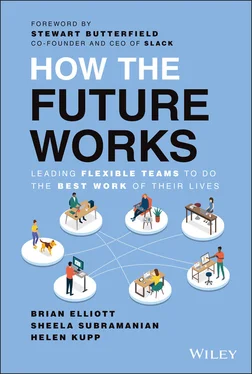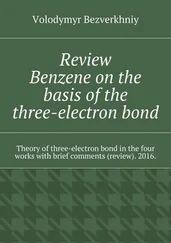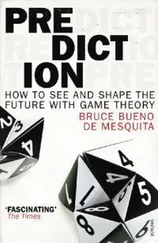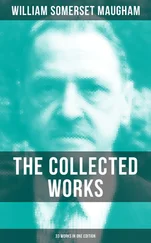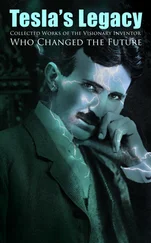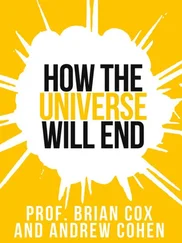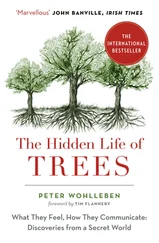Brian Elliott - How the Future Works
Здесь есть возможность читать онлайн «Brian Elliott - How the Future Works» — ознакомительный отрывок электронной книги совершенно бесплатно, а после прочтения отрывка купить полную версию. В некоторых случаях можно слушать аудио, скачать через торрент в формате fb2 и присутствует краткое содержание. Жанр: unrecognised, на английском языке. Описание произведения, (предисловие) а так же отзывы посетителей доступны на портале библиотеки ЛибКат.
- Название:How the Future Works
- Автор:
- Жанр:
- Год:неизвестен
- ISBN:нет данных
- Рейтинг книги:5 / 5. Голосов: 1
-
Избранное:Добавить в избранное
- Отзывы:
-
Ваша оценка:
- 100
- 1
- 2
- 3
- 4
- 5
How the Future Works: краткое содержание, описание и аннотация
Предлагаем к чтению аннотацию, описание, краткое содержание или предисловие (зависит от того, что написал сам автор книги «How the Future Works»). Если вы не нашли необходимую информацию о книге — напишите в комментариях, мы постараемся отыскать её.
when
where
How the Future Works: Leading Flexible Teams to Do The Best Work of Their Lives
How the Future Works
How the Future Works
How the Future Works — читать онлайн ознакомительный отрывок
Ниже представлен текст книги, разбитый по страницам. Система сохранения места последней прочитанной страницы, позволяет с удобством читать онлайн бесплатно книгу «How the Future Works», без необходимости каждый раз заново искать на чём Вы остановились. Поставьте закладку, и сможете в любой момент перейти на страницу, на которой закончили чтение.
Интервал:
Закладка:
One of the core goals of Future Forum is to understand what people need, to do their best work, and find ways that leaders can meet them where they are so organizations and people can find greater success together.
“To me, flexible work is the future. If there's one silver lining of the pandemic, it's that this time away from the office has allowed us all to reevaluate our priorities.”
— Ben Chestnut, co-founder and CEO, Mailchimp9
Seven Steps to the Future of Work
The need for this book arose out of the work that Future Forum has been doing since its founding. It draws on the experiences of a wide variety of companies—including IBM, the Royal Bank of Canada, Levi Strauss & Co., Atlassian, Dell, Genentech, Salesforce, Boston Consulting Group, and of course, Slack—as well as experts in the field to not just redesign the future of work, but provide a blueprint to get there. Because, without a doubt, the old way wasn't working as well as it could.
While flexibility is not a panacea for all workplace issues, it is a major step in the right direction, if done right. Of course, doing it right can be tricky when companies have been working in a specific way for decades and don't know how to make the shift—because if you want to be successful, it's not a simple retrofit process, where you take old ways of working and move them into a virtual forum. This book aims to help you redesign how you work by taking you through seven key steps, filled with case studies and hands-on advice, to make it happen. After all, there is a real battle for talent going on, and flexibility is what people want. As you will see in the next chapter, it's also what companies in a fast-changing marketplace are going to need if they want to stay competitive.
Notes
1 1. The Startups Team (2018). ‘Slacking Off: Interview with Stewart Butterfield’, Startups.com. Available at: https://www.startups.com/library/founder-stories/stewart-butterfield(Accessed: 18 November 2021).
2 2. Curran, E. (2021). ‘Goldman says pandemic is shaping a more productive US economy’, Bloomberg, 12 July. Available at: https://www.bloomberg.com/news/articles/2021-07-13/goldman-says-pandemic-is-shaping-a-more-productive-u-s-economy?srnd=future-of-work&sref=qysce8Zq(Accessed: 21 November 2021).
3 3. Deloitte (2021). ‘2021 Fortune/Deloitte CEO Survey’, https://www2.deloitte.com/us/en/pages/chief-executive-officer/articles/ceo-survey.html(Accessed: 21 November 2021).
4 4. Subramanian, S. (2020). ‘Farewell to the office?’, Future Forum. 19 November. Available at: https://futureforum.com/2020/11/19/is-it-time-to-say-farewell-to-the-office/(Accessed: 18 November 2021).
5 5. Thompson, D. (2014). ‘A formula for perfect productivity: Work for 52 minutes, break for 17’, The Atlantic, 17 September. Available at: https://www.theatlantic.com/business/archive/2014/09/science-tells-you-how-many-minutes-should-you-take-a-break-for-work-17/380369/(Accessed: 18 November 2021).
6 6. Jacobson, L. (2015). ‘Unions did not create the eight-hour work day and the 40-hour week. Henry Ford did’, Politifact, 9 September. Available at: https://www.politifact.com/factchecks/2015/sep/09/viral-image/does-8-hour-day-and-40-hour-come-henry-ford-or-lab(Accessed: 19 November 2021).
7 7. Suzman, J. (2021). Work: A deep history from the stone age to the age of robots. New York: Penguin Publishing Group.
8 8. Cianciolo, B. and Vasel, K. (2021). ‘The pandemic changed the way we work. 15 CEOs weigh in on what's next’, CNN Business, 9 September. Available at: https://www.cnn.com/interactive/2021/09/business/perspectives/future-of-work-pandemic/index.html(Accessed: 19 November 2021).
9 9. Cianciolo, B. and Vasel, K. (2021). ‘The pandemic changed the way we work. 15 CEOs weigh in on what's next’, CNN Business, 9 September. Available at: https://www.cnn.com/interactive/2021/09/business/perspectives/future-of-work-pandemic/index.html(Accessed: 19 November 2021).
Why Flexible Work Works
“The workplace will now be wherever work happens, and the workweek will be whenever work happens best for each person.” 1That was how Dropbox CEO, Drew Houston, described the company's flexible work strategy, announced in October 2020, which was a clear break from how they'd worked in the past. Dropbox had largely been an office-centric culture, and they'd invested a lot in creating what Chief People Officer, Melanie Collins, describes as “the most delightful work environment we possibly could.” Their office spaces, which are located around the globe from San Francisco to Sydney, Australia, included things like state-of-the-art gyms and world-renowned cafeterias featuring their own signature roasted coffee blend. Office space was such a big part of their culture that pre-pandemic only three percent of its people didn't work out of one. When the COVID-19 pandemic hit and those offices had to close, the vast majority of Dropbox employees were displaced.
Much like what happened at Slack, as the pandemic forced them to pivot, Dropbox leaders were surprised to find that productivity and performance didn't really miss a beat. That caused them to rethink what they'd been doing and accelerated their conversation around the merits and possibilities of flexible work. The pandemic forced more flexibility on companies, of course, but the question for Dropbox quickly became: How could it work over the long-term? What would a flexible work strategy look like if it were dictated, not by circumstances, but by design?
The answer wasn't obvious. Dropbox began by forming a team, co-led by Collins and Alastair Simpson, their Vice President of Design, with representatives from different parts of the company—design, tech, HR—to really study the issue. They took their time and kept an open mind as they looked internally at how their people were responding, as well as externally to benchmark dozens of companies. “We considered everything on the spectrum from full-time to no-time at the office,” Collins explains.
Among the models they rejected was the typical hybrid one—where some people work remotely and others continue to come to the office as usual. This is, perhaps, the model most people think of first, but Dropbox decided it wasn't right for them—the main reason being, as Collins explained, because it “creates two very different employee experiences that could result in issues with inclusion, or disparities with respect to performance or career trajectory depending on whether you are in the office or remote.”
Instead the team came up with a strategy that makes flexible work the primary experience for all employees. But when the concept was proposed to their leadership team, it was far from an immediate win. There were questions and pushback. Houston, in particular, wanted more detail. It sounded good in theory, but he wanted to be able to picture what a “day in the life” would look like for employees.
As we mentioned earlier, Houston now describes the workplace as being “wherever work happens,” and the workweek as “whenever work happens.” So, how do you balance those notions with the very real need for team members to connect and collaborate with one another? Instead of the traditional 9-to-5 expectations, the team asked what people really needed to collaborate effectively with one another while balancing individual needs for focus time. The flexible work proposal included the concept of “core collaboration hours”—four-hour windows of time each day when employees would be accessible to one another to do these very things, leaving the rest of their schedule open to get individual, focused work done when it suited them (see Figure 1). That concept raised concerns, like: “How will I be able to meet with people in different timezones?” and “How will I condense eight hours of meetings into just four?”
Читать дальшеИнтервал:
Закладка:
Похожие книги на «How the Future Works»
Представляем Вашему вниманию похожие книги на «How the Future Works» списком для выбора. Мы отобрали схожую по названию и смыслу литературу в надежде предоставить читателям больше вариантов отыскать новые, интересные, ещё непрочитанные произведения.
Обсуждение, отзывы о книге «How the Future Works» и просто собственные мнения читателей. Оставьте ваши комментарии, напишите, что Вы думаете о произведении, его смысле или главных героях. Укажите что конкретно понравилось, а что нет, и почему Вы так считаете.
